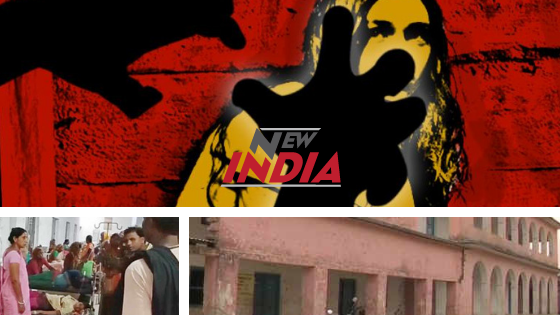
Mob attacked over 34 school girls for resisting harassment and molestation in Bihar
Patna: Thirty-four girls student of a residential school in Bihar had to pay a heavy price for opposing routine sexual advances made by some local youth on Saturday evening. The girls were thrashed so badly by the boys that the injured girls were rushed to the hospital immediately in an ambulance. “More than 12 girls sustained grievous injuries and the condition of two of them is critical”. Many of the injured have internal pain, said Congress MP, Ranjit Ranjan from Supaul who visited the hospital on Sunday.
“When the girls came outside the school to play, boys standing in the nearby terraces used explicit words. After the girls revolted to the comments, they were beaten up by the boys. A few of us went to the field to calm the situation. It all became peaceful soon after, but the boys did not stop misbehaving. At that point, there were 10-12 boys.
The mob had a free run, vandalized the Kasturba Gandhi Balika Vidyalaya(KGBV), which is the residential school for girls belonging to SC, ST, OBC and minority communities. Only two arrested were made till the time of going to press. Both KGBV and middle school are on the same campus with the separate building but a common playground. ”
The Girl at KGBV alleged that some youth of Darpakha often harassed them sexually and passed lewd comments. The girls confronted some of the youths on Saturday and the violence was in retaliation of this act, they added. Narrating the sequence of events, Sapaul DM, Badiya Nath Yadav said some of the girls confronted a few local youths and some middle school students for writing vulgar messages on the wall of KGBV.”Such incident won’t be tolerated, we will identify the culprits and bring the guilty to book”
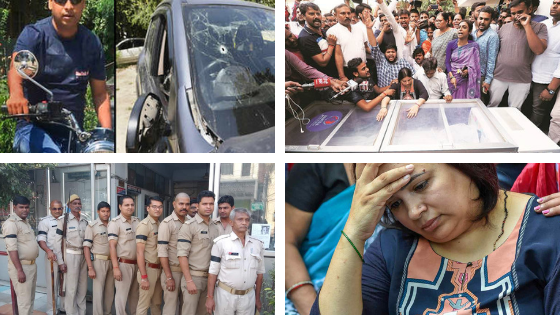
India should stand with Tewari and his wife kalpana, Yogi Govt should suspend all cops who supported this and if cops stand with black armbands for murder cop, what justice can public get? A week after the murder of Apple employee Vivek Tiwari by a constable, UP police are tackling rebellion in the force’s rank and file, Junior cops are rallying behind the arrested constable, Prashant Chaudhary, citing “freedom of expression” and blaming their senior for not supporting them. Police constable across UP sported black armbands and posted photos on social media in a show of solidarity with suspended constable chaudhary, currently behind bars as the main accused in Tewari’s murder . As the images went viral, Tewari Window kalpana demanded action against the cops. Initially DGP, O P Sing’s office said most of the pictures morphed or lifted from other place, but later ordered a probe. The call from for the protest was given by two cops-Avinash Phatak and Brajendra Yadav-both of whom were arrested on Friday for “anti-police” activities and inciting other policeman.
The arrests followed their dismissal on Thursday night . In Lucknow, SSP, Kalanidhi Naithani removed three SHOs – Ajay Kumar Yadav from Aliganj, Dharmes kumar Shahi from Guddamba and Parshuram Sing Naka – and suspended three constable- Jitendra Verma (Aliganj), Sumit Kumar (Gudamba) and Gourav Chaudhary (Naka)-for breach of peace. He said the cops in the photographs were being identified and action would be taken against them.
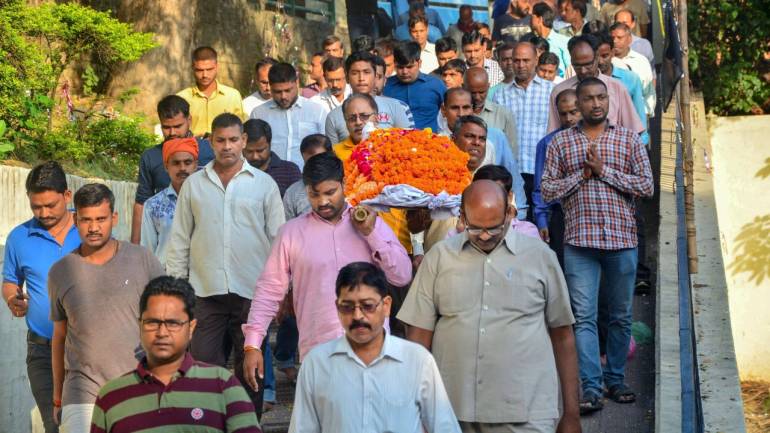
DIG (law and order) Praveen kumar Tripathi said no indiscipline will be tolerated in the force. “We are a disciplined unit and the law is taking its course,” said Tripathi. In Bareilly, constable Neeraj Mathur was attached to police lines for uploading a video against Tewari’s widow Kalpana on social media. A constable in Etah district, Sarvesh Chaudhary, was suspended after he posted a video against his senior for not supporting junior cops.

In today’s busy world, none of us have time to look at what is important. We need to stop ourselves for a minute and look around to see what is going wrong. One such instance, which needs immediate attention is the “Hebbal Flyover“. This flyover was inaugurated on December 30th, 2003 and our honorable CM S.M. Krishna said its a new year gift to the city.

Now we can see a minor crack and the flyover has developed problems with its expansion joints on the arm leading towards Hennur from the airport. The 65 crore flyover was the longest in the country at that time running up-to 5.35 km, with two separate carriageways and six lanes. It was south India’s first interchange at five levels which was built in just 24 months. This is something Bangloreans should be proud of, and now its time to secure it and avoid the disaster.
We do not want Kolkata flyover crash to be repeated here again, so immediate action from BDA has to be taken and avoid the nightmare as this flyover will always be wedged solid with traffic gridlock. This is one of the most busy bus station with a lot of school children commuting everyday, and also the main route towards the airport. When we can protest and stop the steel bridge from Chalukya to Hebbal flyover, why are we silent for the safety of children and responsible lives.
Its time to stand up and question the concerned authorities about the quality of flyover and get this problem fixed on priority.
Wake up Bengaluru!!

India: A patriarchal, discriminating society
From Sati, child marriage, dowry to marital rape India as a society breeds many such taboos. Indian society, to provide an overview, is largely a traditional society which still holds on to the vestiges of the past in terms of age old beliefs and customs. The political set up of the country on the other hand is quite a contrast on paper.
The Constitution of independent India boasts of being one of the first documents envisioning a political structure, historically situated in the 20th century world that offered equal political, social and economic rights to women alongside men. This was a marvel at that point in time as many advanced nations of the First World had then yet to come to terms with the demand and need for gender equality.
So what happens when a country is governed with the help of new age laws while traditional society resists the new legislative requirements of practising gender equality, guided by the discriminatory customary laws? The situation that arises appears almost like a cosmetic surgery on a wound that has malignant properties. Social indicators such as female infanticide rates, maternal mortality rate and overall child sex ratio besides the obvious statistics found in crime reports are telling signs of this misfit beneath the image of a new age democracy.
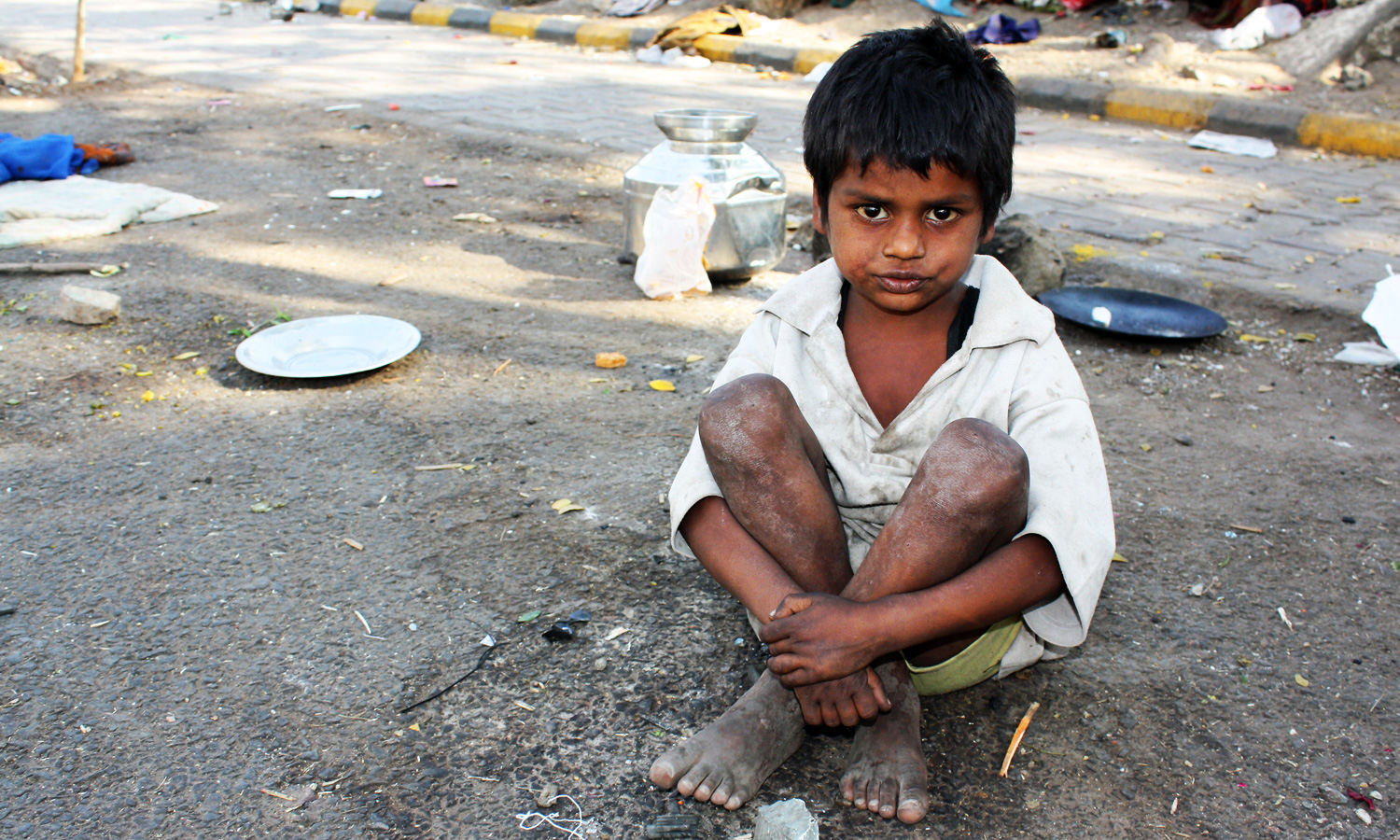
As much as 500 million of India’s total population live below the poverty level. These families live in living standards that are among the poorest in the world. Thousands of mothers, newborn babies and children in India die every year from preventable diseases. 27% of deaths of children below age 5 are because of prematurity, 14% due to respiratory infections and 11% due to diarrhoea. 66% of the rural population in India lacks access to preventive medicines.
Healthcare is, by far, out of a poor man’s reach. About 75% of healthcare resources are concentrated in urban areas, where only 27% of the total population resides. 31% of the rural population in India has to travel over 30 km to get even the most urgent medical treatment. About 40% of the population in the metropolitan and large cities live in urban slums, where primary healthcare is provided by health posts. Most of the health posts are located outside the slum areas, making accessibility difficult.
Healthcare is every child’s right but problems like lack of quality infrastructure, shortage of experienced medical functionaries and non-access to basic medicines and medical facilities avert its reach to over 60% of the child population in India. The need of the hour is to work collectively towards promoting health in areas, where the poor children manage to survive.
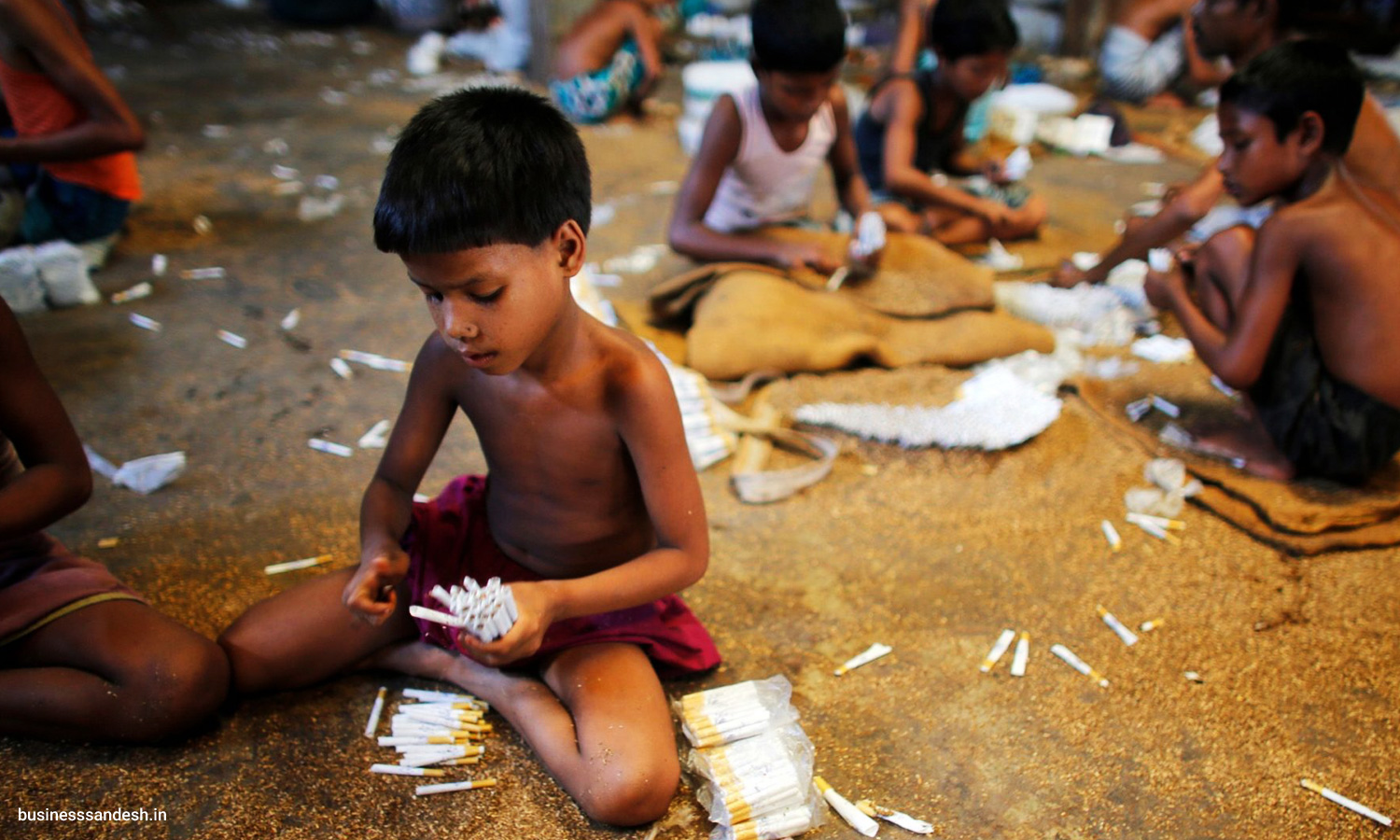
There are 10.13 million child labourers between 5-14 years in India. Children are a nation’s future and often this future is ruined at the hands of the monster called Child labour. Internationally it is one of the major concern and as for our country it is one of the burning issues. The law states that anyone below the age of 14 cannot be employed both in a factory, office, or restaurant and even as house-help. Unfortunately large number of manufacturing units and offices have children as their work-force. India’s exports have been severely affected due to this, as hiring is a child is considered violation of human rights. In a large number of cases of export of ready-made garments, prawn and several other items from India has been rejected on grounds of child labour is being used.
The key causes contributing to Child labour are, poverty, reduced labour cost, reasons for engaging as domestic aid as the children are less doubtful about dishonesty or less liable to misbehave or be violent.
In a developed society where every citizen counts and all citizens have to have proper education, health care supports, games and entertainment and complete his education so that when he is a fully grown adult he can get a full employment with standard salary. We need, strict laws, public awareness, increase in employment opportunities for adults, free education, and a consciousness that makes us realize that a child needs to be a child.
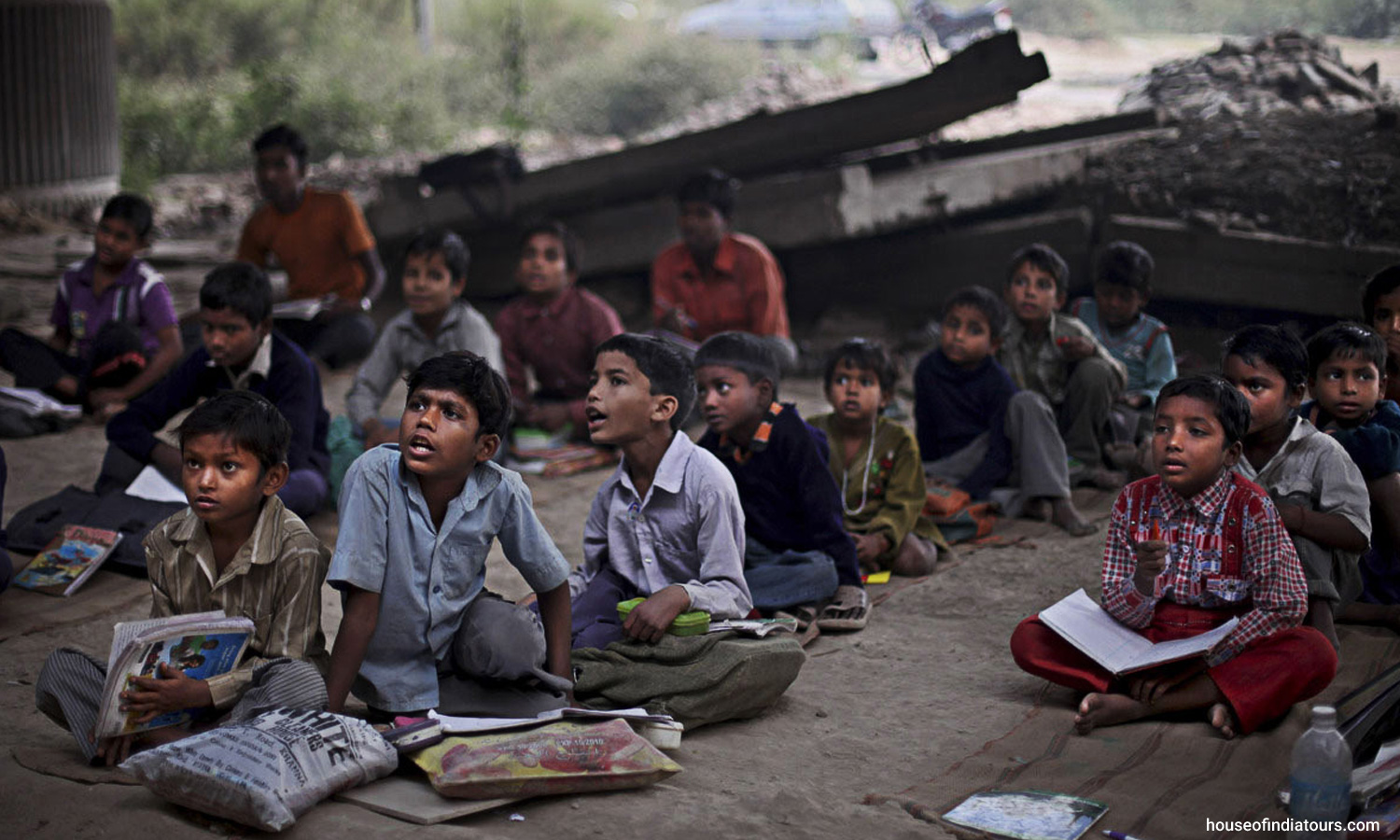
1 in 4 children of school-going age is out of school in our country. 99 million children in total have dropped out of school. Only 2% of the schools offer complete school education from Class 1 to Class 12 (District Information System for Education (DISE) 2014-15).
These numbers are an indication that the right to education has become a privilege. Large number of children in our country are deprived from their basic right of education. India is a country with more than one billion people, and just one-third of them can read. Rapidly growing size of population, shortages of teachers, books, and basic facilities, and insufficient public funds to cover education costs are some of the nation’s toughest challenges. This is where Children in India are facing the basic challenges. According to a study, more than 30% of educational funds are allocated towards higher education, leaving the primary education in India in sway.
India is fourth among the top 10 nations with the highest numbers of out-of children in primary level. Furthermore, the rate of school drop-outs amongst students is very high. One of the main reasons behind this is poverty. When earning a livelihood and taking care of the members of the family becomes a primary matter of concern in one’s life, education stands a little or, very often, no chance of pursuance. For the underprivileged people in India, education is perceived as a high-priced luxury, and this negative outlook continues on with every new generation.
A disproportionate number of total out-of-school children in India are girls. What denies equal opportunities of children are serious social issues that have arose out of caste, class and gender differences. The practice of child labour in India and resistance to sending girls to school in several parts of the country remain as genuine concerns. If the current trend continues, millions of underprivileged children will probably never set foot in a classroom. For a brighter tomorrow we need to nurture our today.

It is believed that by the year 2030 167 million children across the globe will be living under the poverty line, 69 million children below the age of 5 will die due to mostly preventable causes and 750 million girls will fall prey to child marriage. Poverty, illiteracy and bad health conditions are the three major issues preying on the innocent. Unprivileged children, who are the world’s poorest children living in slum areas and on the streets, lead a life where in there is no money, no education, lack of sanitation facilities, food and safe drinking water and no proper houses. All this leads to problems like child labor, child marriage, major health issues and crime, posing a threat to urban society and development of the country. The same conditions are passed on to the coming generations of slum dwellers, making their upliftment difficult in the society.
19.8 million Children below age 6 in India are undernourished (ICDS 2015). It is more agreeable to have the power to give than to receive. We life in a world that may be ours today, but it truly belongs to the little ones who will be its inhabitants tomorrow. We have a huge population of underprivileged, malnourished children who are far-away from care and hope. Imparting quality education to these people. Making them self-independent in life. Providing all the basic facilities (like food, clothes and education) to adopted poor children. Let us take a step towards a lovely future.

As per studies, one in three of the world’s malnourished children lives in India. In India, each year, an estimated 27 million children are born—nearly 2 million of which do not survive the fifth birthday. A major cause of this is malnourishment. Over 200 million people in India do not have access to good food, and more than 40% of the children who manage to survive beyond the age five are malnourished. In India, 46% of all children below the age of three are too small for their age, 47% are underweight and at least 16% are wasted. Millions of poor children in India do not receive immunization. 79% of children under age 3 suffer from anaemia. More than 50% of children have poor learning capacity because of iodine deficiency.
Due to inadequate intake of essential nutrients, malnourished children experience several problems, including delays in development, weight-loss and other illnesses. In young children, undernourishment can greatly compromise the immune system, making them highly susceptible to infectious diseases. Besides this, it causes severe growth implications and cognitive implications like memory deficiency, low IQ scores, impaired school performance, and learning disabilities.
Underprivileged children are at a higher risk for various short-term and long-term complications as they experience several macronutrient and micronutrient deficiencies since the time of birth. In fact, it is before birth that many children and their mothers face complications, due to undernourishment. Girls are more at risk of undernourishment than boys because of their inferior social status. Every year, thousands of women die due to negligible intake of essential nutrients during pregnancy. The child and maternal mortality rates for India are amongst the highest in the world. It is believed that malnutrition alone causes 50% of infant and maternal deaths.

